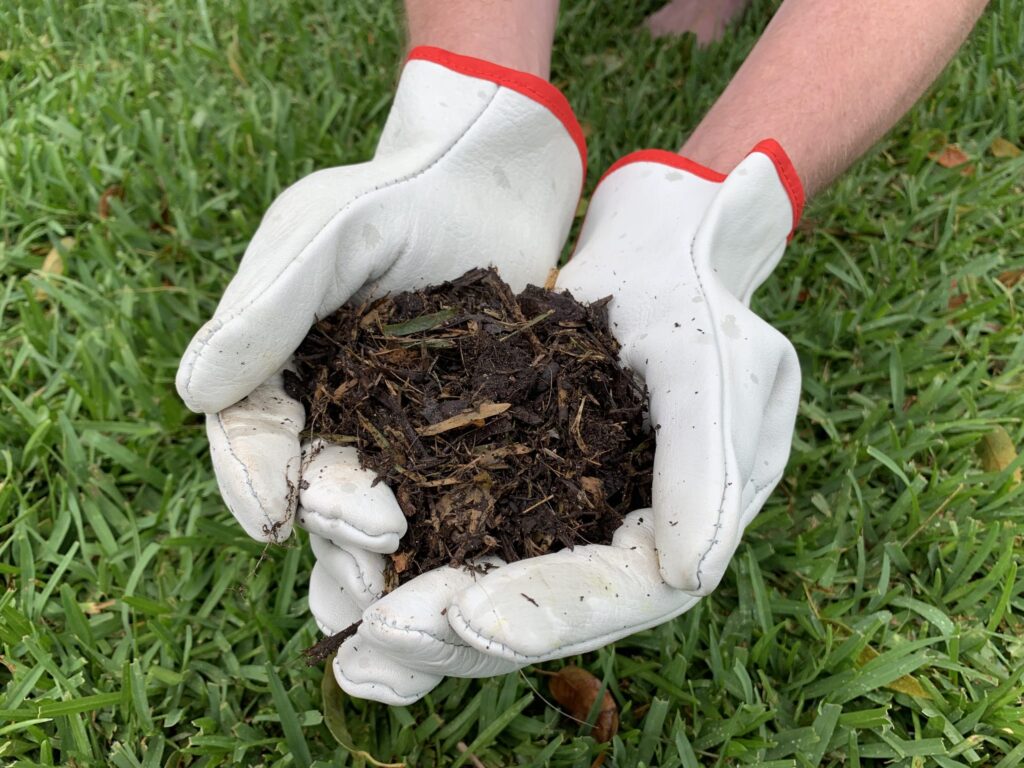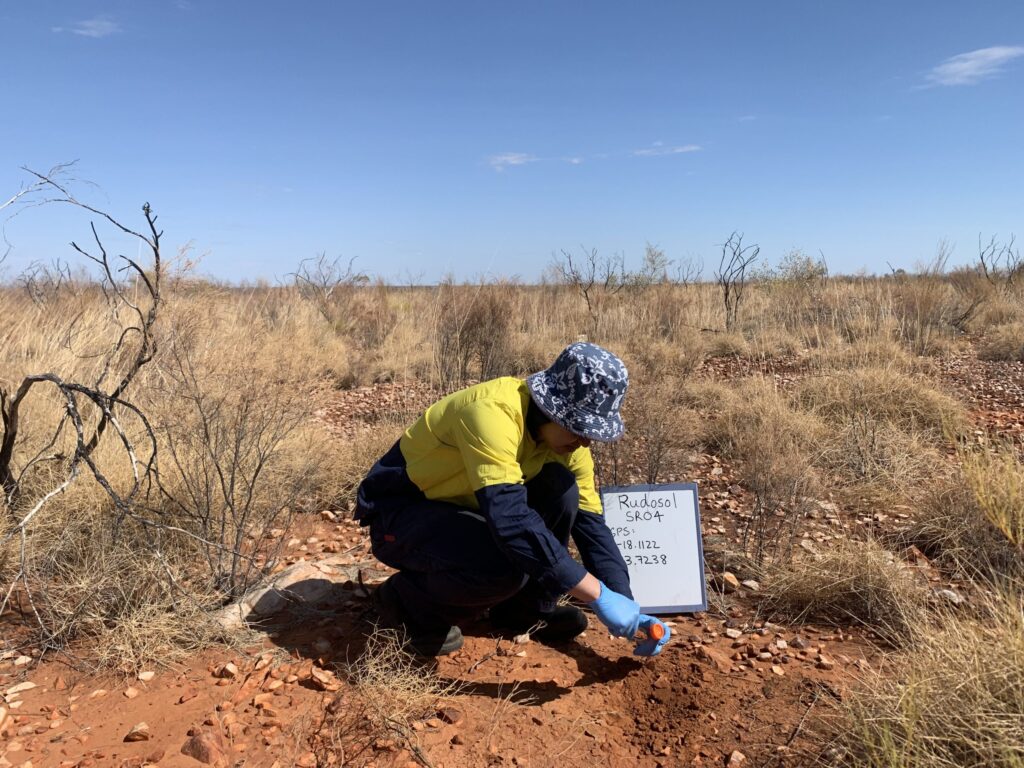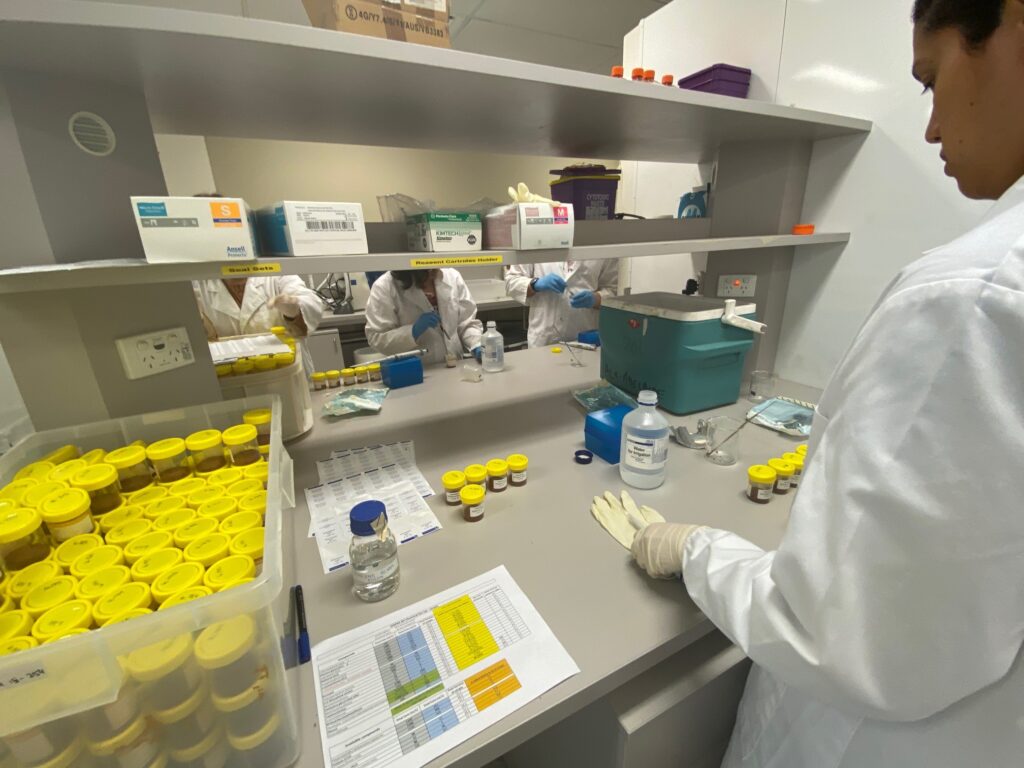Toiling in the soil – why we love microbes

In a handful of healthy soil there can be as many as 10 billion living organisms.
While many of us might think of soil as just dirt, and only notice it when it’s out of place (like on our hands or clothes), the top layer of soil across the continents of planet Earth represents an extremely diverse and dynamic environment.
In a handful of healthy soil there can be as many as 10 billion living organisms, and these rich microbial communities form the basis for all life on earth.
Soil microbes include bacteria archaea, fungi, various microeukaryotes (also known as protozoa) along with larger, multicellular eukaryotes such as nematodes (tiny worms).
The way microbes transform organic matter into essential elements, and the succession of microbes involved, is a crucial aspect of microbial communities that has long fascinated CSIRO microbiologist Dr David Midgley.
David leads the Biogeochemistry and Microbiology Team in CSIRO’s Energy Resources program and has investigated microbes in a range of settings including plant leaves and roots, biological filters, industrial holding ponds, mine sediments, animal digestive tracts, in soils, freshwater systems (rivers, creeks and lakes), marine sediments, in shallow aquifers, and in deep subsurface systems.
Microbes underpin all life on earth
“Microbes in soil carry out a range of vital activities essential for maintaining life,” David says. “They underpin life on earth as we know it, facilitating plant growth through symbiotic relationships (such as mycorrhiza or root nodulation). This facilitation requires the degradation of organic matter that falls to the ground.”
“This degradation process is the system by which microbes degrade and alter organic matter into increasingly simple forms.
“Think of a fallen leaf landing on the soil. This leaf is made up of the elements carbon, nitrogen and phosphorus and others arranged into various compounds of differing complexity, such as sugars, amino acids, proteins, DNA, and cell-wall components.
“In order for other organisms like plants to access the nutrients within this leaf. It needs to be degraded, catabolised, by the microbial community.
“Initially, while it is still fresh, the leaf is rapidly colonised by various pioneer microbes which consume the simple components (sugars and amino acids). After these microbes have completed their role a second group of microbes arrives, degrading more complex material (proteins, DNA) into simpler forms.
“Finally, a third group of microbes arrives, specialised in breaking down really hard components such as cellulose – the material that forms paper, or lignin – a resilient compound that plants use to reinforce wood.
“At the end, the leaf’s nutrients have been completely recycled into new forms and are available for other organisms to use.”
CSIRO’s GISERA researching microbial processes
A key part of the work of the Biogeochemistry and Microbiology Team is looking at how microbes may mediate environmental impacts associated with human activity, such as industrial development.
An example of this type of research is the range of studies undertaken by CSIRO’s Gas Industry Social and Environmental Alliance (GISERA), which engages CSIRO’s scientific capabilities to improve understanding of issues of concern to communities living near onshore gas development.

CSIRO researcher taking soil samples in the Northern Territory.
“One of the concerns communities have is around the fate of chemicals in the event of a spill,” David said. “Even though the gas industry has rigorous procedures to prevent these events, and there’s significant regulation through government that aims to prevent spills, chemical spills are still possible, so we set about trying to work out how microbes in soils and aquifers would respond to a spill, and whether they might be able to degrade chemicals of concern.”
A previous GISERA study had looked at the fate of chemicals used in hydraulic fracturing formations when added to soil samples taken from the Surat Basin, Queensland, and found some types of chemicals were completely degraded within two to three days.
With onshore gas development proposals being considered by governments and industry in the south east of South Australia, and more recently in the Beetaloo Sub-basin in the Northern Territory, David’s team were tasked with new research projects examining the interactions between microbial communities and chemicals likely to be used or released by the gas industry.
One of the South Australian studies is complete and the other two research projects are in progress.
The completed study, Microbial degradation of chemical compounds used in onshore gas production in the SE of South Australia, found soil microbial communities, particularly bacteria, were effective in breaking down most chemicals used by industry during gas production.
“Most chemicals examined in the study either appear to be completely degraded in soil or are able to be used as sole‐carbon sources for microbial growth by taxa from Penola soils,” David said.
“While soil bacterial communities were largely unaltered by chemical additions, soil fungal communities were altered more by the presence of chemicals, so there are unknown implications for the ecosystem services provided by affected fungal communities.”
“Overall, soil microbial communities are the key component of biodegradative processes and decomposition and represent a primary pathway for the chemical contaminants from onshore gas activities to be removed from the environment.”
The other South Australian research project looks at the role of microbial communities in degrading chemicals in aquifers, while in the Northern Territory the fate of hydraulic fracturing chemicals in the sub-surface and in storage is under the microscope.

Setting up in the CSIRO soil testing laboratory.
